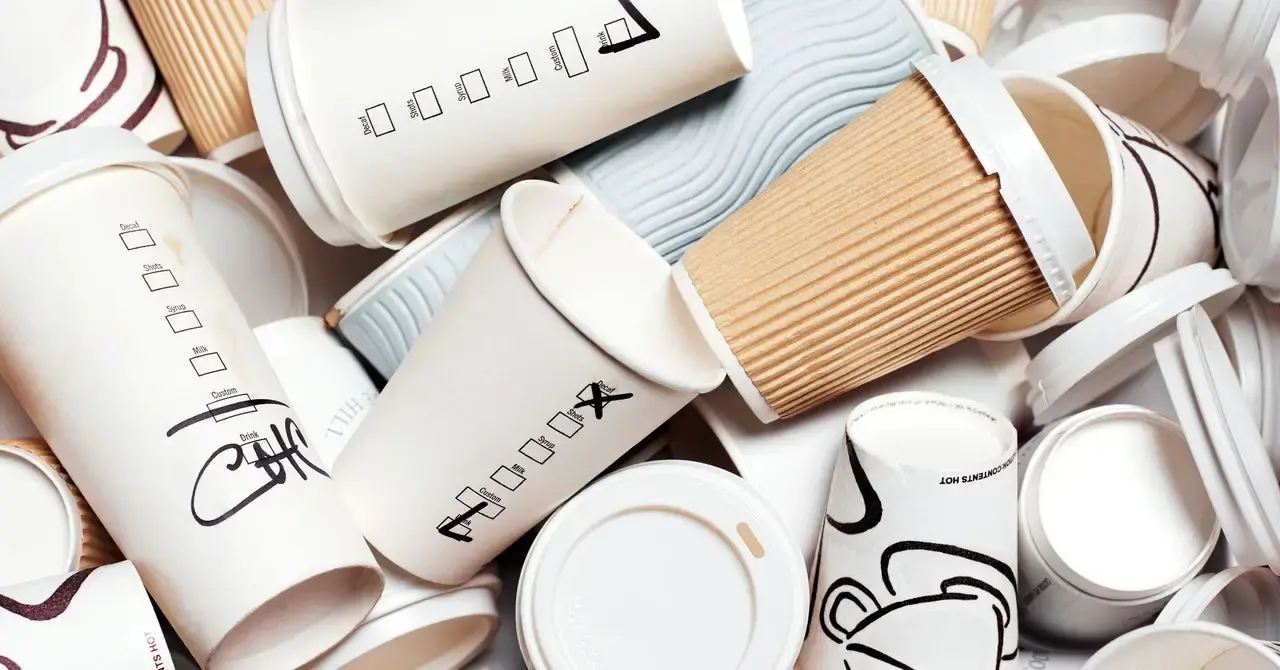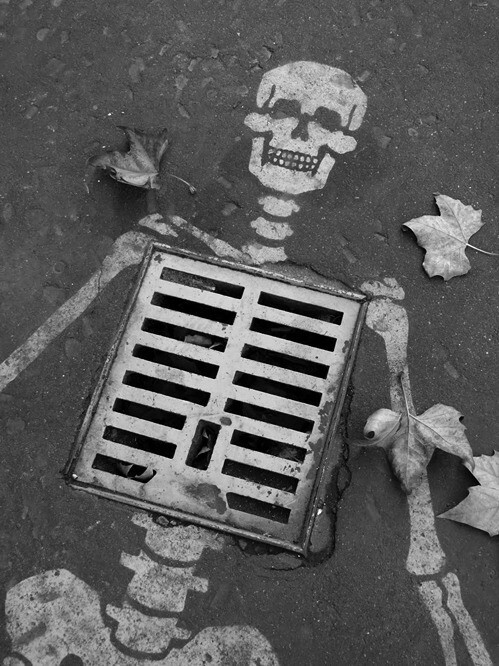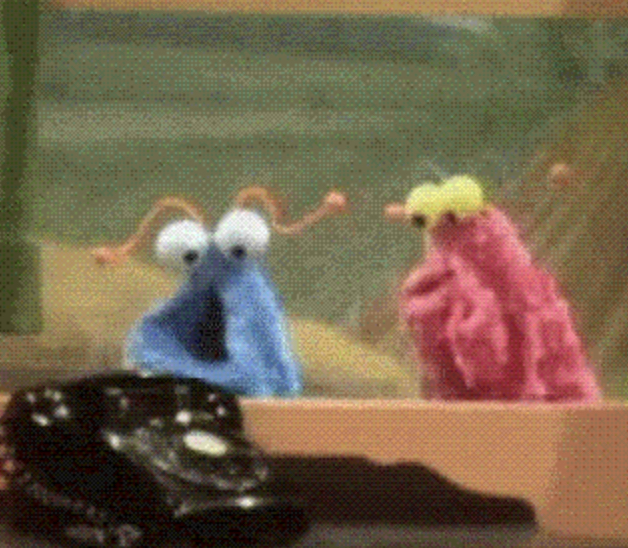TL;DR: This article is misleading and sensational. Do not take it at face value.
The cups were placed in temperate water or sediment and left to leach for up to four weeks.
This isn’t how the cups were intended to be used. Yes this can be used to model a threat caused by cups littered into our environment; but this article tries to spin this out first to scare you.
Coffee cups are made of a complex mixture of synthetic materials and chemicals. Manufacturers add processing aids, heat stabilizers, and other substances, many of which are known to be toxic. Even if plant-derived materials are used—such as polylactic acid, a material derived from corn, cassava, or sugarcane that’s used to coat paper cups—cup makers often add a number of other chemicals during processing.
More scare tactic information; preying on your lack of familiarity with how these things are regulated or tested. Scaremongering continues for two more paragraphs before it abruptly changes tone midway.
Improving recycling practices would be a logical step in trying to keep harmful chemicals from ending up in nature, but researchers say it’s best to retire disposable paper cups altogether. It’s difficult for most recycling centers to separate the plastic coating from the cup’s paper. In the UK, for instance, a mere handful of recycling centers take paper cups. Many coffee shops will collect them for recycling—but having to drop paper cups off takes the convenience out of a single-use product. Today, only four out of every 100 paper cups are recycled in the UK.
By now the author hopes you’re scared enough to do as they ask; but if you weren’t convinced; they threw in some other statistics at the end, and even breaks their suggestion by showing how inconvenient and impractical it is to recycle them.
In 2019, a research group from India filled paper cups with hot water to see if plastic particles or chemicals were released. “What came as a surprise to us was the number of microplastic particles that leached into the hot water within 15 minutes,”
They’re still not done scaring you though.
On average, there were 25,000 particles per 100 ml cup. The researchers also found traces of harmful chemicals and heavy metals in the water and plastic lining, respectively.
They dump some number of particles on you; giving you zero context, and zero information about how dangerous that is. They only mention in passing the “harmful chemicals and heavy metals”, giving no specific concentrations nor giving you any clues as to how much of it is in there.
https://www.sciencedirect.com/science/article/abs/pii/S0304389420321087
Unfortunately the above article is pay-walled; and is difficult to access. I doubt the journalists read the full paper. Everything mentioned in the article is accessible from snippets on this exact webpage; which may mean things are being taken out of context.
B-b-but … chemicals!
While I was reading it I felt the idea that baking under the sun in a landfill could have a similar effect? Sure, that’s not their “intended” use but also looking around extremely trash-filled areas, there is definitely trash baking under the sun in small puddles so they aren’t really being used as intended in the first place.
Just around my old home in a country where trash isn’t piled up everywhere to the point where it’s a community effort to solve, I saw plenty of styrofoam and wax lined paper cups sitting in the same conditions - damp, wet, and baking. Frankly, it seems weird to say it’s only sensationalism when there are around 600 billion paper/plastic cups made a year and there’s no possible way that 100% of them are being disposed of “how they are intended to be used”.
While I don’t think it’s the most important thing ever we should focus on, it should be important to mitigate issues like this when we come across them and there’s nothing wrong with raising awareness. At the moment, there are actually hundreds of thousands of these types of products in water and landfills. Whether that’s how they were meant to be or not, if conditions can cause them to break down this way then somewhere along the way it is going to happen because we just can’t properly dispose of 100% of anything.
The point is that the article gives no context for their statistics. This is super common in science journalism.
For example, take the articles that came out after the vaping and heavy metal study came out. Vapes have heavy metals in them. Scary!
What they didn’t mention was that the levels found were lower than atmospheric levels.
The same can be said of all the paper/cardboard being used in the food industry - paper straws, cardboard takeaway containers etc are all lined with PFAS and other “forever” chemicals that leach into your food. We really need a law to force companies to disclose the composition of products that come in contact with food.
Disclosure is nice, but it probably won’t change the outcome. As long as things are disposable and cheaper, those things will be used. As always money talks. Instead taxes related to expected lifetime (one use only should be really expensive) and environmental impact (that one is probably impossible to realize) might actually help, but yeah, that in itself cannot be realized without knowing composition.
We have no reason to laugh at ancient Rome’s unfortunate use of lead pots for cooking beverages and lead pipes for drinkable water. Down with plastics.
Lead pipes are fine for water unless some cheapo decides to change the water composition in a way that removes the thin layer that forms on the lead and keeps it from leeching into the water. We still have a ton of lead pipes not giving lead poisoning today.
Plastics are like the ruined pipes.
Human error is inevitable and we should design systems to be invulnerable to this. Just dont use lead. Period.
PVC, steel, and all of the other options also have the possibility of poisoning is in certain situations when not maintained properly.
Don’t build anything, got it.
Seems like there’s a fine line between lead and micro plastic poisoning and just proper engineering with health in mind. Plenty of these options exist and have long term safety when done correctly.
Its speculated that lead-soldered copper pipes are the lead factor to lead poisoning in the U.S. so… It’s really not that far fetched. Just do it right.
Also given the state of the U.S., lead poisoning is looking pretty on point.
Pain areas: in the abdomen or joints Gastrointestinal: constipation, nausea, or vomiting Developmental: learning disability or slow growth Whole body: fatigue or loss of appetite Behavioral: hyperactivity or irritability
Somehow it seems reasonable to see something that could potentially cause an issue, point it out, and try to avoid using it unless absolutely necessary.
We’ve known PVC is sensitive to UV for a long time and now studies are showing that even underground PVC can leech chemicals (whether they’re additive or not is by manufacturer). Solution: stainless steel with preventing corrosion over time in mind. Do. It. Right.
It sucks that money making the world go round means doing it cheap and quick is more important.
Are we doing this shit again? Look the straws and disposable cups consumers use pale in comparison to the largest contributors of plastics.
The fishing industry accounts for 70% of all plastic that makes it into the ocean. Textiles and shitty tire disposal combine to contribute about 65% of the plastic you will drink.
All of these things are things politicians can “do things” about but just simply don’t. Instead we get story after story about how you dear consumer are the shitty one who is at fault for the fucked up world you live in, not these hard working captains of capitalism who are just doing their best to keep shareholders happy while trying to buy that $50M mansion.
Yes, disposable cups are a problem. Solving that problem will do zero to change the calculus on the amount of plastic you’re actively putting into your body. This whole, “it’s not the fucked up systemic pollution our society relies on that’s the issue, it you to average person who is at fault for every problem in this world” Stockholm-esque bullshit type of journalism needs to stop.
Yes the scientific paper is indeed an interesting read. But what Wired has done is take this pretty innocuous study and turned it into some green washing flagellant bullshit that literally helps the core issue zero percent. Yes, we should be better stewards of the planet. No, telling everyone they’re pieces of shit for existing does not help the cause.
Let’s do both?
I completely agree with you that big industrial polluters are the main problem. I also think that having the mindset every day to live more sustainably and reduce personal waste is valuable, even if it’s really just a drop in the bucket overall. It can be eye-opening and a step toward bigger steps like voting, advocacy, boycotts, and conversations with others.
I would rather do something infinitesimally small than nothing.
The fear is that by doing these mostly ineffectual changes that puts the burden on consumers, the public perception of how much is being done gets skewed far beyond what the actual benefits are, and it uses up the willpower/energy people have for change. It ends up being a corporate misdirection that prevents any meaningful change from happening, like greenwashing.
Let’s do both?
That’s a fine take, but it ignores that for this particular issue the consumer isn’t the one dictating the terms. I can’t roll up to the McDonald’s and ask them to put my soda into the cup I hand them. Bioplastics and green plastics aren’t a thing that I directly can fund nor can I convince my politician to prioritize research into them. And the other alternatives outside of a brand new kind of plastic or a reusable cup have massive cons, not because they are inherently bad choices, but because companies rushing to implement those changes are usually executed poorly. I mean, the BEST way to reduce this aspect that’s immediately achievable by every single consumer is to just simply stop eating out completely.
I also think that having the mindset every day to live more sustainably and reduce personal waste is valuable
Absolutely. But there’s also the aspect that our society is build with some really messed up assumptions and we really need to address those. Like a lot of energy needs to be poured into those things more so than anything else. Like I said, easiest way to do away with all of the particular plastic involved in the story is to just simply stop giving any money to fast food, take away stuff, etc. Make your own sandwich, pack your own mashed potatoes, fix your own coffee to take with you.
But there’s a lot of people who are getting the full throat IRL experience that will say, “who the fuck has time for that shit?” And it’s not their fault they are caught up in the shit tsunami that is modern society. They’re just trying to survive. So things like “just stop eating there” is surprisingly, and fucked up, a big ask for them.
It can be eye-opening and a step toward bigger steps like voting, advocacy, boycotts, and conversations with others
And yeah, it’s good to have a conversation about it. But we ought to really also talk about the details of the matter because they’re important. Why isn’t that voting working? Why is there so little advocacy? Why are boycotts doomed to fail every time? There’s reasons for these things and I would argue that those reasons are way more important than shaming people who just want to eat a lunch today.
I would rather do something infinitesimally small than nothing
And I agree, but it needs to not stop there. And in fact the bigger picture items, the finer detail things, those things should be what lead the conversation and the stopping of plastic cups would be an outcome of that. Instead we have here a story that starts out with “you’re a bad person for using plastic cups” and goes absolutely nowhere with “why it be like that?” It’s just pure “you’re a bad person. End of story.” That’s not incredibly helpful to convince people that they should be mindful. People should indeed be mindful, but the shirt that a lot of us are currently wearing has a lot more contribution to the issue than the cup some person just received at the McDonald’s.
It’s literally the plastic straw thing again. And changing that didn’t really change much of the calculus then, because the straw thing contributes so little to the actual issue.
I think we’re in violent agreement that just sorta looks like an argument.
I’ll acknowledge that I have a privileged position where I can vote with my dollar for this kind of thing.
This is a similar discussion for electric vehicles and transit. It isn’t the fault of the person in a 20 year old rusted out Civic that they’re burning gas, because their neighborhood doesn’t have a bus and why the heck would they pay for an EV and they just have to get to work.
“Penny wise, pound foolish” – but they figured out they can make people argue about the pennies and keep all the pounds for themselves
“What came as a surprise to us was the number of microplastic particles that leached into the hot water within 15 minutes,” Anuja Joseph, a research scholar at the Indian Institute of Technology in Kharagpur, wrote in an email. On average, there were 25,000 particles per 100 ml cup.
Fuck that.
I love how this is another attempt at making the consumer feel bad for being a participant somehow in the corporations’ material choices for the products they make available as they see fit.
Sorry, your toxic article is a nightmare
There used to be a coffee shop in my town that would encourage customers to bring in their own reusable cups/mugs. Customers that did were served their drink in a glass carafe that they could then pour into their own cup. (I believe it was done that way to comply with sanitation/health code since they can’t be certain that customers had cleaned their cups.) They had a 50¢ discount for those customers and they sold their own branded mugs/cups for like $5-10.
They didn’t make much on their coffee unfortunately and relied mostly on tips to take care of the baristas so the pandemic took them out of business.
There’s a number of takeout coffee places near me that will let you bring your own cup and give you a discount on it. You just need to know how many ounces it contains. I have an insulated stainless steel mug that I always bring. Most places that wouldn’t accept them during the pandemic are back to allowing it again.
Wired. lol.










